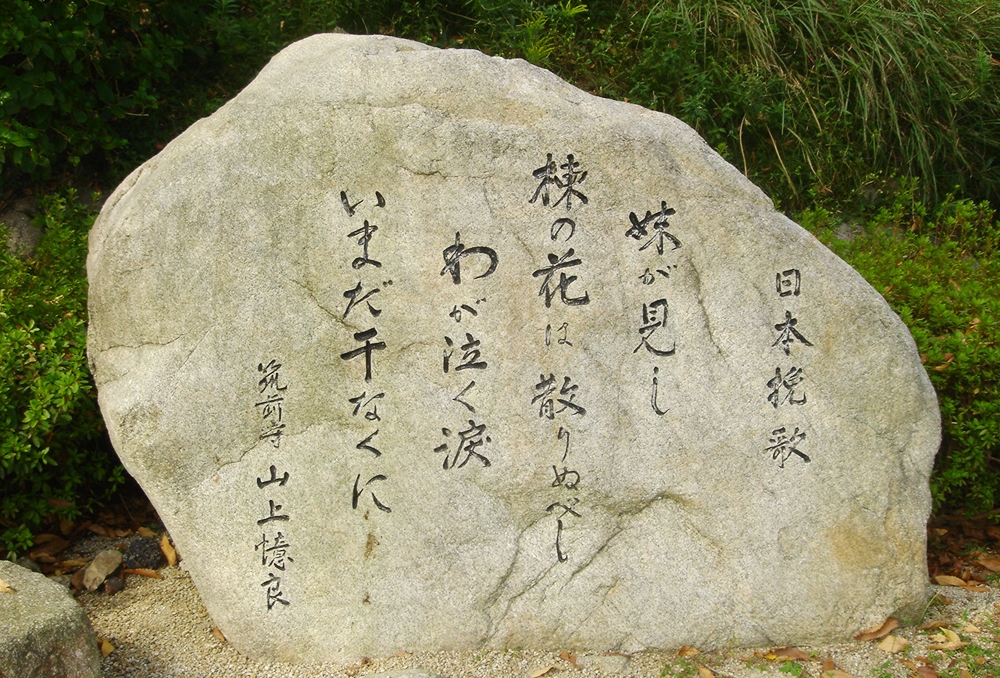Story-Composing Cultural Assets Man'yoshu Tsukushi Kadan

Man'yo Kahi (a monument inscribed with a poem)
About 320 waka were composed in Tsukushi and recorded in the Man'yoshu (Collection of Ten Thousand Leaves), the oldest existing collection of Japanese poetry.
There are some famous waka such as "Baika no En (Plum-blossom Party)" which was composed by public servants from provinces in the Saikai-do (Kyushu) Region at Sochi (Governor of Dazaifu) Otomo no Tabito’s official residence in Dazaifu. And also soldiers who were sent from the eastern provinces of Japan to fortify the border area, called Sakimori composed “Sakimori-no-uta” (waka of a soldier). Another famous waka is “Hinkyu mondo ka" (Dialogue on poverty) by Yamanoue no Okura about the distressing condition of the poor and about the collection of tax by the village chief. Besides these waka, there are many other waka describing scenes of Tsukushi region vividly.
These composers of waka are called “Tsukushi Manyo Kadan”.
Manyo Kahi (monuments inscribed with a poem) are located in various locations in the city and they are attracting many from other prefectures.
More





Out of 4500 poems included in the Man'yoshu anthology, approximately 320 of them were written in the Tsukushi region (now Fukuoka province). Renowned poets stayed in Dazaifu during the Jinki and Tenpyo years (724-748) of the Nara period, and wrote poems that were included in the Man'yoshu. The poems created at a plum-blossom party hosted at the residence of Otomo no Tabito, the Governor-General of Dazaifu, are especially famous. In those times, plums were still-new novelties brought over from the Tang Dynasty.